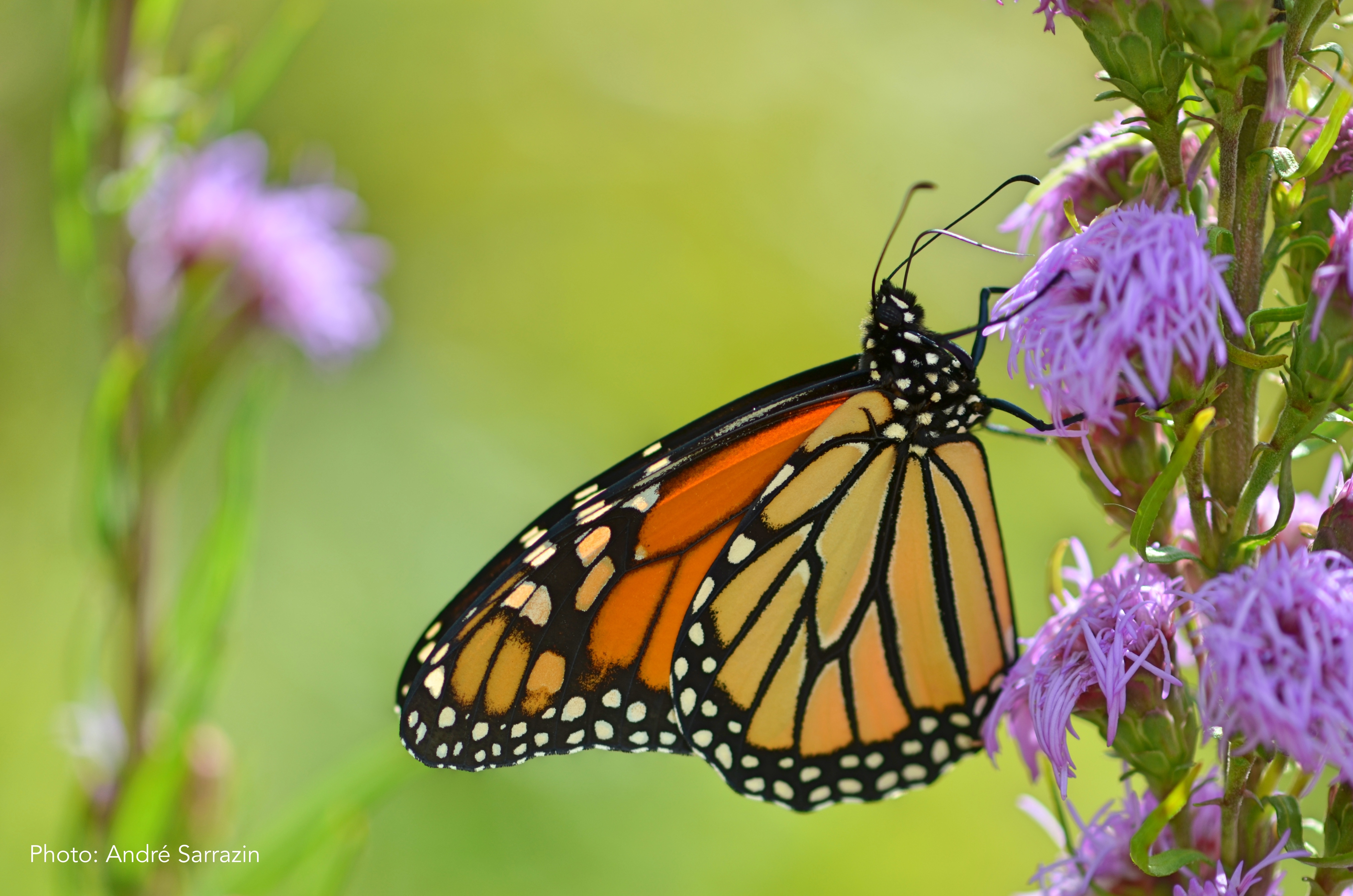Coordinator of the Mission monarch project

In December, the Committee on the Status of Endengered Wildlife in Canada (COSEWIC) released its latest list of endangered species. Among the list is the monarch, whom the Committee recommends qualify as “Endangered”. What impact can this new designation have on the population of the emblematic butterfly? A disturbing news or a source of hope?
About COSEWIC
COSEWIC is a committee of experts who assess the status of Canada’s wildlife based on scientific research, Aboriginal traditional knowledge and community knowledge.
This information provides an informed picture of the risk of extinction of the studied species. Each is given a status ranging from “Not at risk” to “Extinct”. With these assessments, COSEWIC sets out a list of species to be protected.
.

COSEWIC status categories:
- Extinct
- Extirpated
- Endangered
- Threatened
- Special Concern
- Not at risk
- Data Deficient
To qualify for legal protection, a species must appear on the Species List. To establish this list, the federal government decides whether or not to follow the COSEWIC recommendations. It then implements conservation regulations and plans accordingly, under the Species at Risk Act (SARA)
A great change for the monarch
Following the most recent assessment, COSEWIC recommends that the status of the monarch be changed from “Special Concern” to “Endangered” in Canada, which represents a significant leap.
There are several threats to the monarch: pesticides, climate change, destruction of their breeding habitats … But what justifies this drastic change of status, according to the Committee, is the continual reduction in the size of wintering areas, in Mexico. Indeed, oyamel fir forests have experienced an upsurge in illegal logging, despite the protection efforts of the Mexican government. Since the entire migratory population of eastern North America finds itself there during the winter, the region is neuralgic for the survival of the monarch.
Good or bad news?
Many are saddened by these recommendations, but is this really bad news? The situation of the butterfly, which was already precarious, did not worsen. Even if the report shows a hard reality, it can be seen as a source of hope.
This new status would reinforce a sense of urgency. If COSEWIC’s recommendations are followed and the monarch is declared “Endangered” under the SARA, significant and valuable actions can be expected for its conservation. In addition to being beneficial to the butterfly, these conservation actions would contribute to the protection of several other species that share the monarch’s habitat. Let us hope that Canada chooses to invest in the conservation of the insect which symbolizes its association with the other countries of North America!
Help already in motion
The good news is that we do not have to wait for official procedures to lend a hand to the monarch: That’s what Mission Monarch is there for!
Whatever the status of the species, the monarch needs our help. Scientific research is the first step in the recovery of the animal.
Even in the middle of winter, you can take action! Talk about Mission Monarch, recruit participants around you and learn about the butterfly!
We wish all our participants a joyous festivities and an excellent end of the year!
The Mission Monarch Team
More articles




